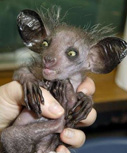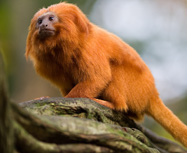Primates -- Lords of their Domain, so they think.



Origins
We primates are a little full of ourselves. The name of the order derives from the word "Primus" meaning "foremost" or "of primary importance". It seems that this order came into being sometime in the Eocene epoch, around 55 million years ago. Most ancestors of apes and monkeys diverged from each other around 20 millions years ago, in the Miocene era.
Everything would have been fine but then around 5 to 8 million years ago an ancestor of the chimpanzees decided to take a walk, mostly on two legs(scandalous, I know!). All hell broke lose after early humans started to appear around 2 million years ago. The rest as they say, is history!
What are they like?
The most important and unique characteristic of this group is the opposable thumb. It helps in grasping objects and opens up a lot of opportunities when feeding. Primates are able to use their limbs most dexterously, either to escape predators or to obtain food. We also possess binocular vision which helps us visualize our environment a lot better that other animals. Larger brains and color vision have made this order very adaptable to their surroundings.

Geographic Distribution
View Larger Map
Primates are able to live on any part of this planet. There is no continent where they are not found. Homo sapiens are even found in the Antarctica. An undying curiousity and an ornery temperament has led us even to the remotest islands of the Pacific.
Reproduction
Most primates live in very socially complex societies. Think of never-ending soap operas and you get the picture. Sometimes this requires that the litter is small, mostly one young is born at a time. Primates have very immature babies and so the time to wean is also very long. Great Ape children can take many years to wean and get to maturity. However, due to the higher survival rates of primate babies, the population of at least one species is booming along at a dangerously fast clip.
Feeding Habits
This is quite a diverse order and so feeding habits vary. Many lemurs have specific feeding adaptations related to the niches that they occupy in Madagascar. Monkeys generally stick to fruit leaves, grass and any rodent or insect protein that they can find. Among the great apes, Orangutans and Gorillas seem to be truly vegetarian or fruit-eaters but humans and chimpanzees will eat anything. Both humans and chimps will actively go out and hunt meat. Chimpanzees have been known to hunt in groups for monkeys in the forests of Africa.
Families within primates
Lemuridae(Typical Lemurs)
Daubentoniidae(Aye-Aye)
Indridae(Indri & Sifakas)
Lepilemuridae(Sportive Lemurs)
Cheirogaleidae(Dwarf & Mouse Lemurs)
Lorisidae(Lorises & Pottos)
Galagidae(Bush Babies)
Tarsiidae(Tarsiers)
Callitrichidae(Marmosets & Tamarins)
Cebidae(Capuchins)
Aotidae(Night Monkeys)
Pitheciidae(Sakis & Uakaris)
Atelidae(Spider Monkeys)
Cercopithecidae(Old World Monkeys)
Hylobatidae(Gibbons)
Hominidae(Great Apes)
Videos